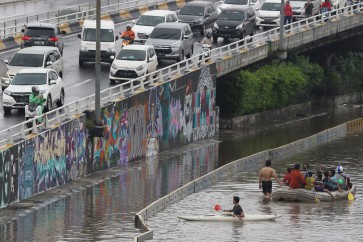Popular Reads
Top Results
Can't find what you're looking for?
View all search resultsPopular Reads
Top Results
Can't find what you're looking for?
View all search resultsCity of concrete: Jakarta’s green space turned into malls, offices, apartments
Now, traces of their green past are only reflected in the names of such places, such as Rawa Belong (rawa literally means swamp), Rawamangun, Taman Anggrek (Orchid Park) and so on, rather than their actual condition today.
Change text size
Gift Premium Articles
to Anyone
W
ith nearly 90 percent of Jakarta built over, according to official data, green space is hard to find, much of it having given way to large commercial and private development -- from shopping malls and offices to luxury apartments and housing.
Around 10 million city residents live in areas that used to be swampy lowlands, with 13 rivers flowing through the city to the Jakarta Bay in the north.
Now, traces of their green past are only reflected in the names of such places, such as Rawa Belong (rawa literally means swamp), Rawamangun, Taman Anggrek (Orchid Park) and so on, rather than their actual condition today.
According to data compiled by the chairperson of the Community and Regional Planning Department of Alabama Agricultural and Mechanical University in the United States, Deden Rukmana, in his article titled “The Change and Transformation of Indonesian Spatial Planning after Soeharto's New Order Regime: The Case of the Jakarta Metropolitan Area” in the February 2015 edition of International Planning Studies, open green space in Jakarta decreased significantly from the New Order era and even after the Reform era.
Each era had its national spatial planning law, Law No. 24/1992 and its replacement Law No. 26/2007. The earlier law stipulated that a city must dedicate 30 percent of its area as green space.
In the 1970s, green areas made up between 40 and 50 percent of the city’s total area and as early as 2009 it had decreased to 9.3 percent.
This trend is also reflected in the city spatial plan. According to the 1965-1985 Jakarta Master Plan, green areas comprised 27.6 percent of the city, 26.1 percent in the 1985-2005 Jakarta Spatial Plan, to only 13.94 percent in the 2000-2010 Jakarta Spatial Plan.


















